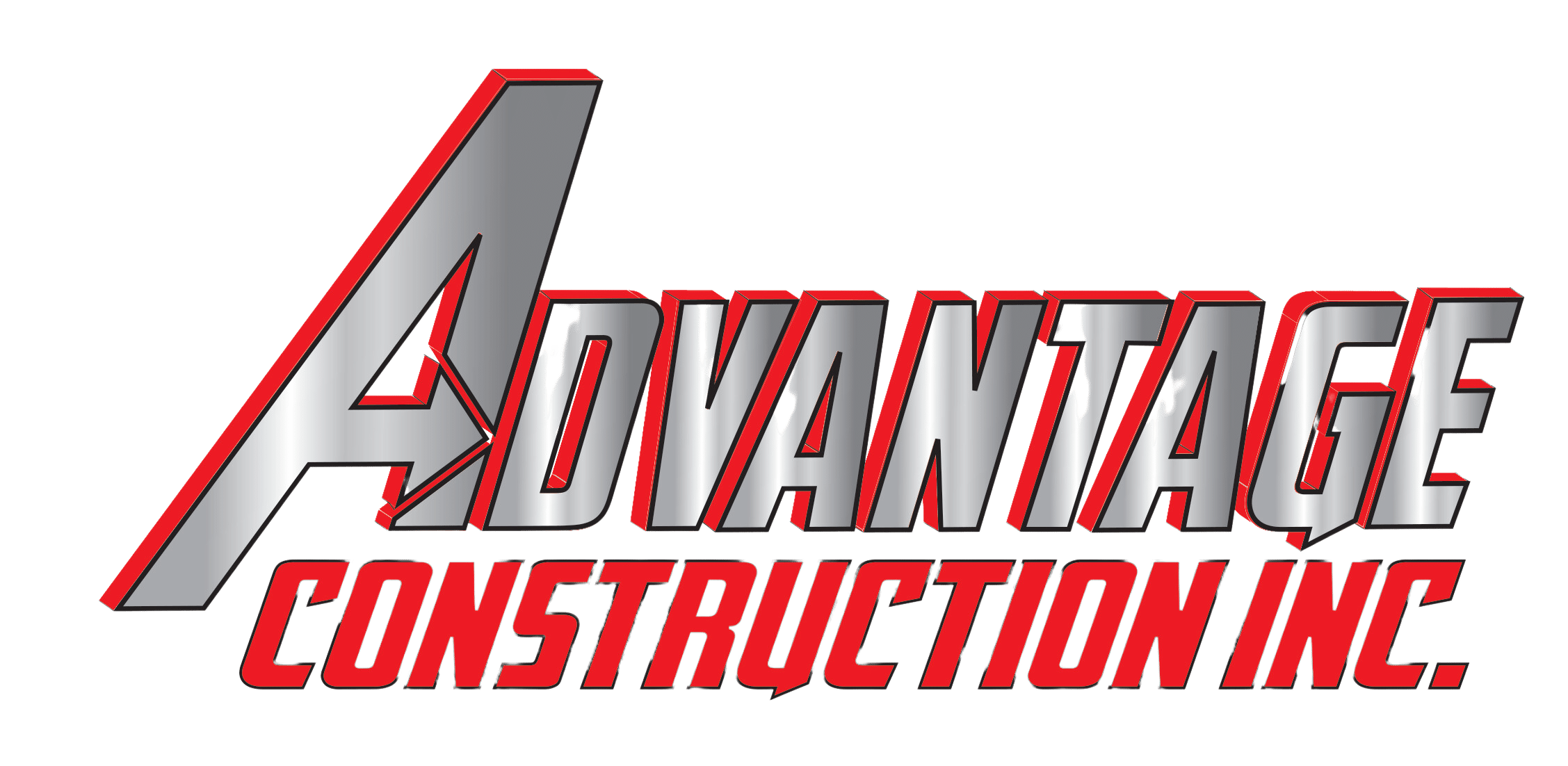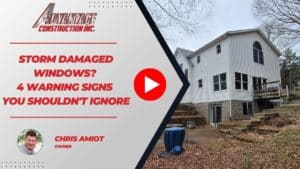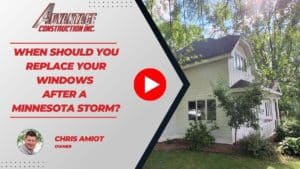Minnesota winters are beautiful, but can be brutal on your home, especially your roof. If you aren’t ready, minor issues can become major concerns when snow and ice fall. That’s why every homeowner needs a Winter Roof Care Checklist to avoid potential problems and ensure their roof holds firm through the season.
We’ve listed the most important things you need to do to prepare your roof for winter and protect your investment. But first, let’s discuss the importance of winter roof inspection.
Why You Need a Winter Roof Inspection
Before the first big snowstorm, you need to know the condition of your roof. A proactive check can help you identify problems that may not be immediately apparent and extend the lifespan of your roof. This is the first and most crucial step to prepare your roof for winter.
Overlooking Minor Issues, Major Problems May Arise
During the warmer months, you might not notice loose shingles, broken flashing, or a lack of airflow in the attic. But when it snows or the weather changes, these problems quickly become leaks or damage to the building itself. Moisture intrusion on your siding, ice buildup on gutters, and heavy snow can exploit even the smallest vulnerabilities.
Schedule a Roof Inspection ASAP
We suggest that you get a professional roof check done in early to mid-fall, before the weather gets cold and snow starts to fall. If you missed that window, it’s not too late to call for help now.
Key takeaway: Routine checks are cheaper than fixes that need to be done right away. Add them to your winter roof care checklist every year. An annual roof inspection is one of the simplest ways to prevent costly winter damage.
A Critical Duo – Insulation and Ventilation
If your attic doesn’t have enough insulation, heat from your home escapes and warms the roof in an uneven way. This causes the snow to melt and then freeze again at the edges, forming ice dams.
The Role of Proper Insulation
Without enough insulation in your attic, heat from your home escapes and warms the roof unevenly. This leads to melting snow, which then refreezes at the edges, forming damaging ice dams.
Why Ventilation Matters
Ventilation helps regulate attic temperature and moisture levels. If warm air gets trapped without airflow, it contributes to condensation, mold, and wood rot.
Key takeaway: Check your attic insulation and ensure soffit and ridge vents are open and clear. A well-insulated and ventilated attic ensures your roof remains cold and dry, which prevents winter damage.
What Causes Ice Dams and How to Prevent Them
Ice dams are one of the worst wintertime hazards to homeowners in Minnesota. If you discover water stains inside your house, it could mean your roof is already leaking. This is a clear sign that something has gotten through the protective layers of your roof.
How Ice Dams Form
When snow that has melted refreezes at the colder edges of your roof, ice dams form. As additional snow melts, the water has nowhere to go and collects under your shingles. This can cause leaks and damage to your roof shingles.
Preventative Steps You Can Take
- Keep your gutters clean.
- Make sure the insulation in the attic is sufficient.
- Install heat cables, if needed.
- Address any previous issues with water infiltration.
Key takeaway: With the right preparation, ice dams can be prevented. This starts with roof maintenance long before the first blizzard hits.
Don’t Overlook Roof Vents and Valleys
Roof vents support airflow. When obstructed by debris or snow, your attic risks overheating and moisture buildup. Valleys collect snow, which increases the load and the risk of leaks.
What Areas to Watch Closely
- Plumbing and furnace vents
- Roof valleys where snow tends to collect
- Attic fans and chimney flashing
Key takeaway: Clearing roof vents and snow-heavy areas helps your roof breathe and shed moisture safely.
Risks of Skipping Your Winter Roof Care Checklist
Neglecting winter maintenance might appear to be a time or money saver, but the potential risks can lead to significant expenses. What could possibly go wrong?
- Undetected roof damage can lead to interior leaks and insulation damage.
- Ice dams may ruin your shingles and cause water damage inside your home.
- Blocked vents and poor airflow can cause long-term structural issues.
Key takeaway: A few hours of maintenance today could save you thousands in repairs later.
Your Roof Care Checklist Before the First Snowfall
In Minnesota, a thorough roof check is necessary before winter sets in. Your attic insulation and ventilation must function optimally, and your gutters must be spotless and unobstructed. Despite their apparent simplicity, your house may need costly repairs if you ignore these measures.
Prepare your home for winter with our practical Winter Roof Care Checklist. This guide will walk you through essential steps before, during, and after the season, ensuring your roof is safeguarded against snow, ice dams, and possible roof damage.
Minnesota Winter Roof Care Checklist: A Proactive Guide
Here’s a practical seasonal breakdown of what homeowners should do to prepare their roof for winter and keep it in good shape afterward. Use this seasonal checklist every year to stay ahead of roof problems and extend your roof’s lifespan.
✅ Fall Preparations (Before the First Snow)
- Schedule a professional roof inspection
- Check and upgrade attic insulation
- Ensure attic ventilation is clear and functioning
- Clean gutters and downspouts
- Install heat cables in known trouble spots
- Trim overhanging branches near the roof
✅ Winter Maintenance (During the Season)
- Use a roof rake to remove excess snow after major storms
- Monitor the attic for signs of condensation or mold
- Watch for icicles or ice ridges that signal ice dam formation
- Keep an eye on ceilings and walls for water stains
- Avoid walking on the roof.
- Call a pro for snow or ice removal
✅ Spring Follow-Up (After Snow Has Melted)
- Inspect for missing or damaged shingles
- Check flashing and roof valleys for leaks
- Examine gutters for clogs or winter damage
- Reassess attic insulation and ventilation
- Schedule a spring maintenance inspection
Key takeaway: Typically, local roofing contractors near you will offer a complimentary inspection. Take advantage of this opportunity to safeguard your home at no cost, but be sure to understand what happens during a free roof inspection before deciding on a roof installation or repair.
Book a Winter Roof Inspection With Our Trusted Team
Don’t wait for a leak to appear in your ceiling before taking action. Now is the time to inspect, repair, and protect your roof before Minnesota’s harshest weather arrives.
Contact Advantage Construction today to find out if your roof is winter-ready. We’re proud to be a trusted local contractor with a proven record of quality work, fair pricing, and storm-ready roofing solutions. Homeowners choose us for our prompt service, expert crews, and commitment to protecting your investment before, during, and after winter.



